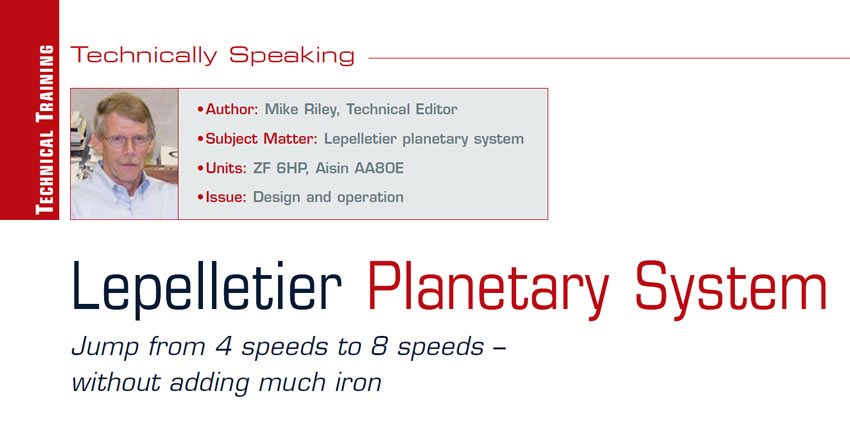Transmission Removal & Replacement: Is it an art, or is it science?
Before any transmission can be rebuilt or have major repairs done, in general, it has to be removed from the vehicle and, regardless whether the unit is rebuilt, exchanged or converted to something else, at some point is reinstalled. This is where the “R&R man” comes up to bat.

Honda 6-Speed Automatics: How little certain things change
In an age of vehicles with seven-, eight- and even nine-speed automatics, Honda is the one constant in an ever-changing world. Transmission manufacturers have achieved the goal of extreme-ratio transmissions (a 10-speed is on the horizon), without adding iron, due to the advent of Lepelletier planets and advanced computerization. Honda, however, has stuck with its traditional architecture.
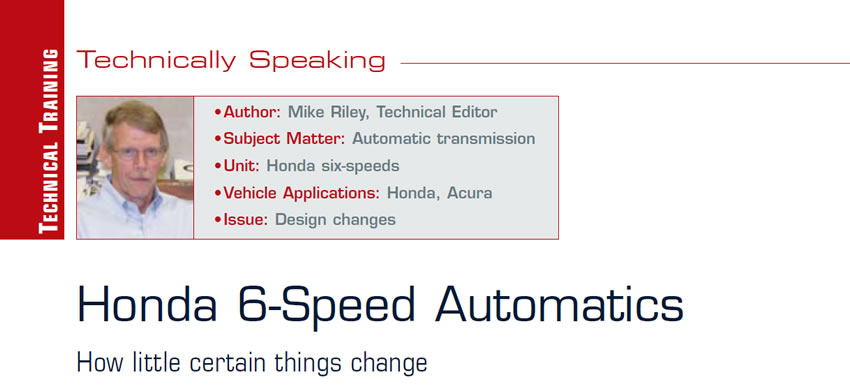
JR405E RWD 4-Speed: The Subaru FWD twin
With the unrelenting proliferation of transmission models and today’s focus on extreme gears, it’s refreshing to see a design that crosses over from RWD to FWD applications. Having one basic architecture certainly makes diagnosis and rebuilding procedures much easier.
Such is the case with the JR405E. The transmission is made by Jatco, and although the company is currently the king of CVTs, it also makes a variety of step-type units. Jatco makes transmissions for the global market as well, meaning that shops in the U.S. would never get a shot at repairing.
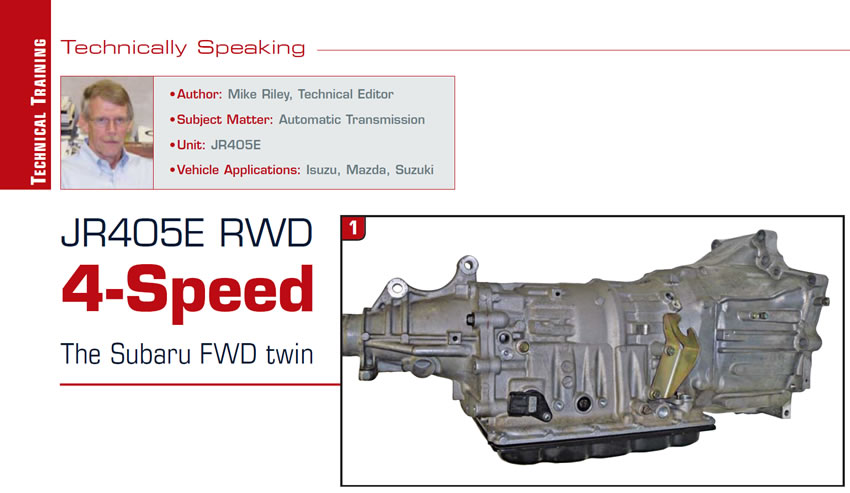
2010 Escalade Noise: What’s the rattle under the hood?
A 2010 Cadillac Escalade equipped with a 6.2L engine and 6L80 transmission arrived with a somewhat erratic rattle noise from under the hood. At first glance (or sound, actually), there was not a particular condition that would trigger the noise. And noises being what they are, this made for a tough diagnosis.
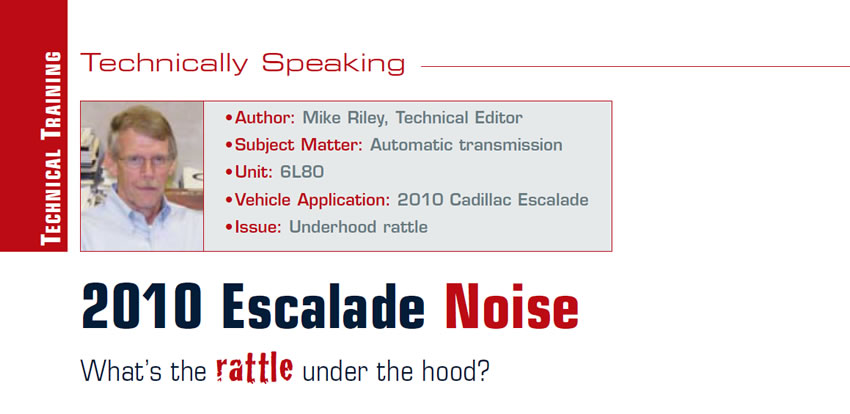
The New Jatco JF015E: When is a CVT not a CVT?
The CVT (continuously variable transmission) concept has been around forever, but CVTs have been on the road now for decades, in one form or another. Although there are several different models of CVT, they all have one thing in common: basic operation.
Over the years there have been variations in CVTs from vehicle model to model, starting with the original DAF European CVTs, up to the first Jatco CVT, Saturn VT20E, ZF VT1, Ford CFT30 and then on to later-model Jatcos. There are CVTs that use a torque converter and some that don’t. A CVT may have a push belt, while others use a drive chain. Electrical components also vary widely among models. In addition, certain models use a direct-drive pump while others use a chain-driven remote pump. The CFT30 uses a pump with oscillating pistons. A CVT will also have a planetary gear set, primarily for reverse.
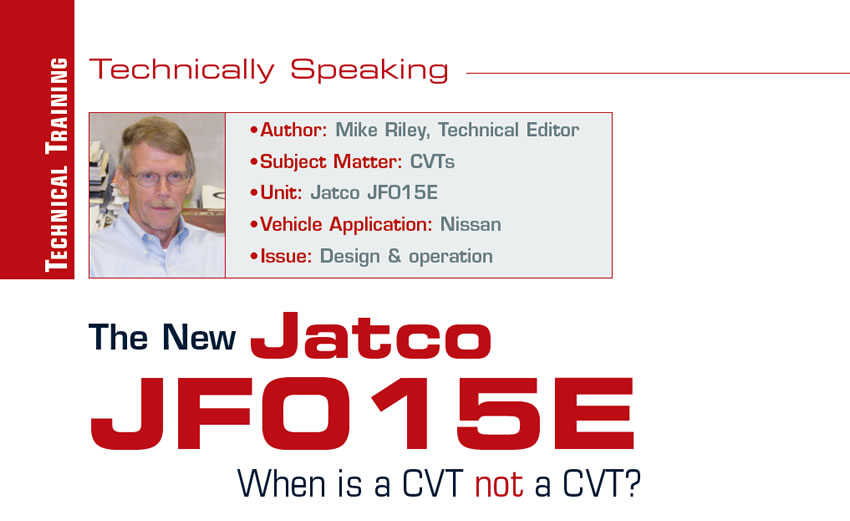
Automatic-Transmission Fluid: What is today’s reality?
Long gone are the simpler times of having just one or two types of transmission fluid. Throughout the 1950s, ’60s and early ’70s, there were basically GM type A or type A “suffix A” and Ford type F. Because of a changing environment, such as increasing engine/transmission temps as well as a fluid-component issue (remember the ban on sperm-whale oil), fluid started to evolve.
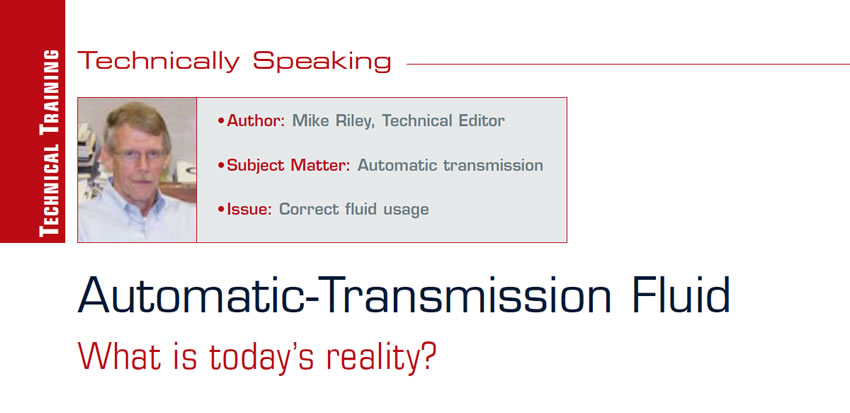
JR710E RWD 7-Speed: RE5R05A plus parts/minus parts
Jatco, a Japanese transmission manufacturer, has for decades produced a variety of transmissions, and although Nissan and Subaru have been the largest consumers, several car companies use its products.
In recent years, the focus of Jatco has leaned toward CVTs (continuously variable transmissions); however, the company has always produced step-type transmissions – from simple three-speed automatics all the way up the food chain to seven-speed transmissions, like the JR710E/711E.
Jatco also launched a hybrid version of the JR710E, coded JR712E, in 2011. The JR712E concept is somewhat in line with the GM 2ML70 hybrid.
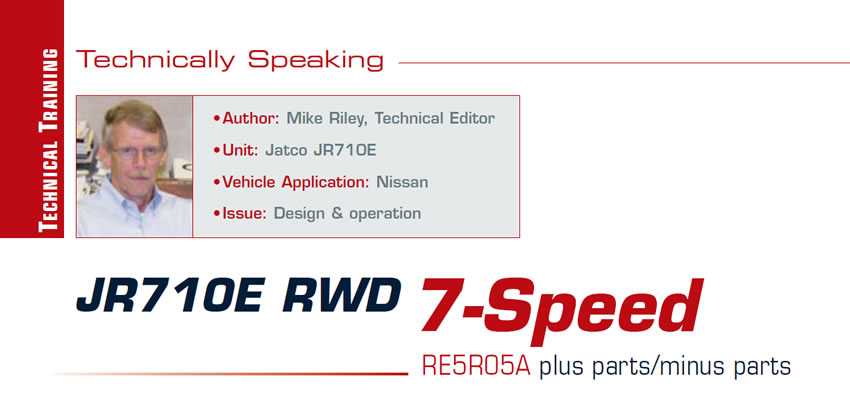
ZF 4HP16 FWD Four-Speed: The obscure ZF transmission
For decades, ZF, the German transmission manufacturer, has been cranking out an array of automatic and manual transmissions, from basic three-speeds to cutting-edge eight- and nine-speed automatics. The company has been first to market with several innovations now used by most OE manufacturers in one form or another. Not all of its development projects, however, have been familiar to the aftermarket repair industry.
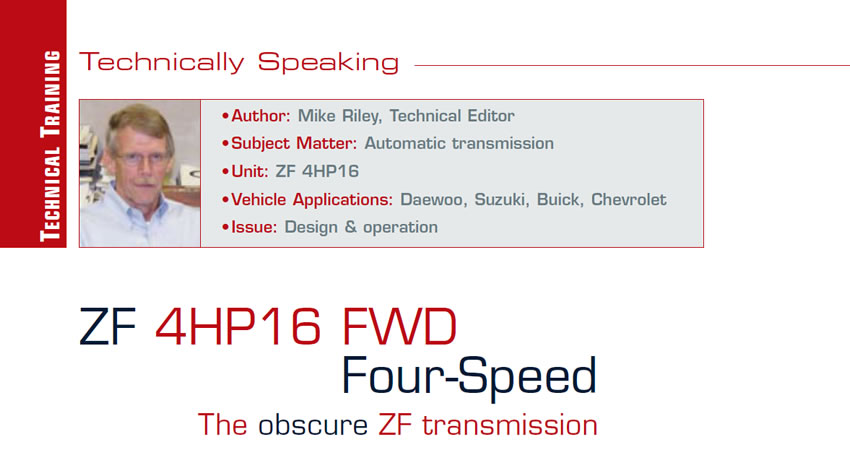
5R110W Upgrades
Beginning with the launch of the 5R110W in 2003, the number of tweaks has been unending. Some of the item upgrades had been limited to the item itself, whereas others resulted in rather expensive and heavy packages.

AB60E 6-Speed (A750/761E big brother)
With all the changes swirling around the transmission world today, it’s no wonder that manufacturers look to benefit from “economy of scale.” Millions of dollars and much time are devoted to developing a completely new transmission platform. Once a new transmission design is implemented and proven successful, it only makes sense to enhance and expand upon it.
Take the case of the Aisin-produced A750E five-speed RWD, which was launched in 2003 for Lexus and Toyota. The Aisin handle for that model is TB-50LS. The A750E was a departure from not only the A340 family of transmissions but even the A650E five-speed. This new design was developed with an eye on the future.
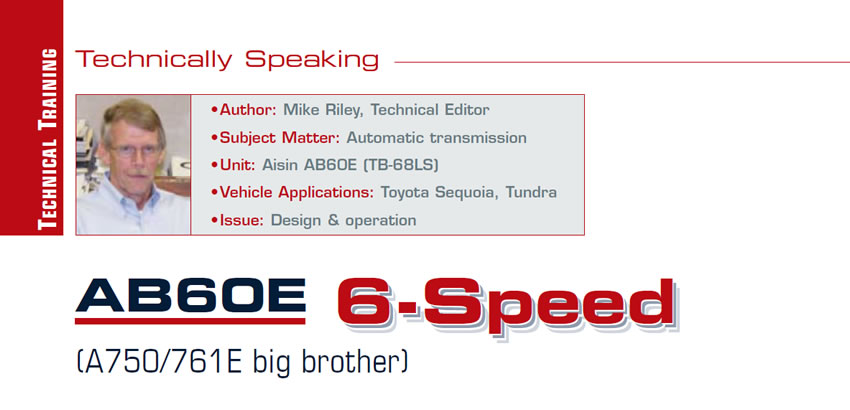
Subaru Lineartronic: Not all CVTs are east/west
The CVT that was developed for Subaru is a major departure from all other transverse-mounted CVTs. This new-design unit, called a Lineartronic, hit the streets in 2010. To say that a Lineartronic is a monster would be an understatement. The unit could probably fit right into a Sherman tank. There is also a difference in design between gas and diesel applications. In addition, to understand the power flow would be akin to “the ankle bone is connected to the shin bone, the shin bone is connected to the …” etc.)
Lepelletier Planetary System
When it became apparent that four speeds weren’t enough, the games began by adding more gears. ZF stepped up to the plate in the early ’90s by launching several new-design five-speeds that involved a lot of stuff. Ford took a simpler approach by turning an A4LD (4R55E) into a 5R55E, mainly by computer strategy cycling the OD section on twice.
Without a significant change in thinking, though, stepping up to six or more speeds would have resulted in a transmission weighing a ton. The answer to the problem was the Lepelletier planetary system.
